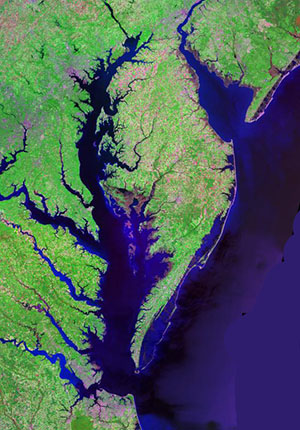|
 In a move that could spearhead major advancements in civilian and commercial use of unmanned aircraft systems (UAS), the University of Maryland (UMD) UAS Test Site has initiated a feasibility study for a UAS route network overlying the Chesapeake Bay. In a move that could spearhead major advancements in civilian and commercial use of unmanned aircraft systems (UAS), the University of Maryland (UMD) UAS Test Site has initiated a feasibility study for a UAS route network overlying the Chesapeake Bay.
Such a network would be designed to enable unmanned aircraft to be flown safely within airspace that also includes conventional, piloted aircraft. In addition, unmanned aircraft systems (UAS) utilizing the network would be able to fly beyond visual line of sight (BVLOS) and over populated areas. Currently, most UAS operations are constrained by BVLOS requirements and restrictions on flying over people.
“There is a widespread consensus that integrating UAS into non-segregated airspace is critical to realizing the vast potential of unmanned systems,” said UMD UAS Test Site Director Matt Scassero. “But it has to be done safely and systematically, with a well-conceived framework and operational best practices. The Chesapeake Bay UAS Route Network will provide an appropriate means to move forward.”
The feasibility study is being developed in partnership with The Padina Group, a consulting firm that specializes in aerospace and aviation, and with the participation of key industry and government stakeholders, including the Federal Aviation Administration’s (FAA) UAS Integration Office.
John Walker, senior partner with The Padina Group, said the Chesapeake Bay region is poised to take on a historic role.
"Technology advancements within the aerospace industry have generated a 'Kitty Hawk' moment that is revolutionizing global air transportation," Walker said. "The innovative use of drones for commercial purposes is recognized as an early enabler of this new aircraft technology.”
"The Chesapeake Bay is close to the site where the Wright Brothers successfully took flight in December 1903," he noted. "Now, in 2020, the Bay region is poised for the development of new technology and services that will benefit millions. This emerging air transportation technology will bring important public benefits and connect with other transportation systems throughout the region."
According to Scassero, the planned network would be implemented in phase. Initially, only small unmanned aircraft would be permitted to fly in non-segregated airspace, and only at lower altitudes. In later phases, the network would be opened to larger aircraft flying at higher altitudes.
Research, commerce, humanitarian needs, and public safety could all benefit from the establishment of a such a network, Scassero said. “The time is right for major steps towards airspace integration,” he said. “It’s important for the regional economy, for the budding UAS industry, and for the many who can benefit from the capabilities these technologies offer.”
The feasibility study is the latest initiative from the UMD UAS Test Site, which has led a succession of missions aimed at advancing the use of unmanned systems, including the first-ever drone delivery of a live organ for transplant. Part of the A. James Clark School of Engineering at UMD, the UAS Test Site has also helped pioneer the use of drones in disaster relief, search and rescue, and many other critical endeavors.
Related Articles:
Equipping Drones to Recover When Things Go Wrong
UMD Team Advances in NIST UAS 5.0 Competition, Wins Three Best in Class Awards
Diving Deeper into Competition, and Recruitment
UMD Student Team Lauded for Award-Winning Drone
CareDx Acquires UMD-linked Transplant Tech Firm
“Gambit” Pays Off in UMD Team’s Search-and-Rescue Competition Win
UMD’s SeaDroneSim can generate simulated images and videos to help UAV systems recognize ‘objects of interest’ in the water
New algorithms for multi-robot systems in low communication situations
ArtIAMAS receives third-year funding of up to $15.1M
Work on the future of regulating autonomous systems published in IEEE Access
November 17, 2020
|

